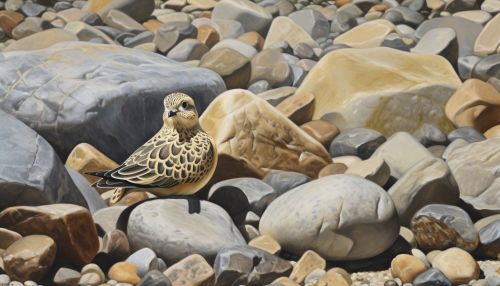Pterocles tibetanus
Taxonomy and Description
The Pterocles tibetanus or Tibetan Sandgrouse is a species of bird in the family Pteroclidae. It is endemic to the high-altitude regions of the Tibetan Plateau, hence its name. The Tibetan Sandgrouse is a medium-sized bird, with a length of approximately 30-40 cm and a wingspan of around 50-60 cm. It is characterized by its mottled brown and grey plumage, which provides excellent camouflage in its rocky habitat.


Habitat and Distribution
The Tibetan Sandgrouse is found exclusively on the Tibetan Plateau, an area of high-altitude steppe, alpine tundra, and lakes. The plateau is known for its harsh, cold climate, with temperatures often dropping below freezing. Despite these challenging conditions, the Tibetan Sandgrouse has adapted well to its environment and is able to survive in these extreme conditions.
Behaviour and Ecology
The Tibetan Sandgrouse is a ground-dwelling bird, spending most of its time on the ground foraging for seeds and insects. It is a gregarious species, often seen in flocks of up to 50 individuals. The Tibetan Sandgrouse is a strong flyer, capable of covering large distances in search of food and water. Its flight is fast and direct, with rapid wing beats.
Reproduction
The breeding season of the Tibetan Sandgrouse typically begins in April and lasts until June. The female lays 2-3 eggs in a simple ground nest, which is often nothing more than a scrape in the ground lined with grass and leaves. The eggs are incubated by both parents for a period of around 22-24 days. Once hatched, the chicks are precocial, meaning they are able to leave the nest and feed themselves shortly after hatching.
Conservation Status
The Tibetan Sandgrouse is currently listed as 'Least Concern' on the IUCN Red List of Threatened Species. This is due to its large, stable population and the fact that it does not face any major threats. However, like all species, it is affected by habitat loss and degradation, and its status could change if these issues are not addressed.
